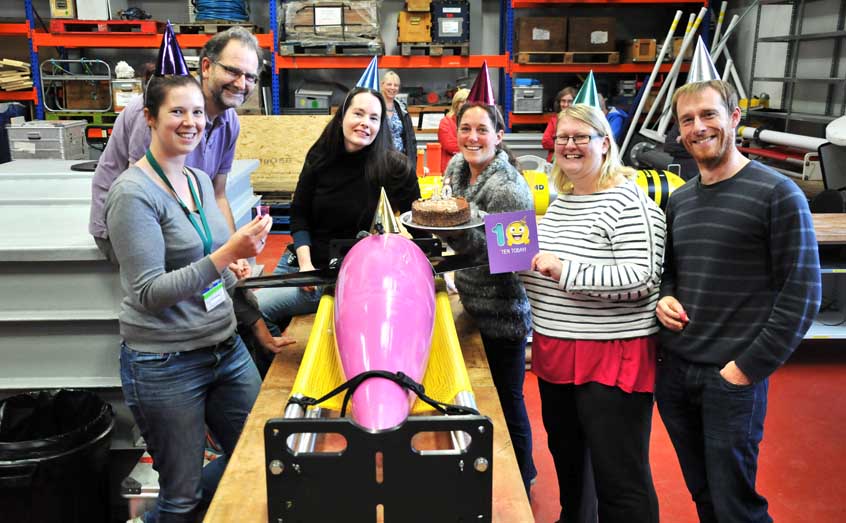SAMS news room
Birthday party for robotic oceanographer

She has been monitoring the North East Atlantic over a decade and now Talisker, the oldest robotic Seaglider in UK marine science, has received some well-deserved recognition with a 10th birthday party.
Gliders are deployed for months at a time to take measurements such as oxygen, salinity and temperature in the deep ocean and have been gathering crucial data for oceanographers.
Having already travelled 11,500 kilometres, spent 622 days at sea and recorded 6,484 oceanographic profiles, Talisker has been as far as Iceland on her missions, often braving force 10 storms and high seas. As one of the first Seagliders in the country, Talisker represented a step change in how oceanographic data is collected.
To mark the 10-year milestone, SAMS scientists made a birthday cake and invited SAMS colleagues to come and learn more about the work of gliders and other autonomous vehicles.
SAMS oceanographer Prof Mark Inall said: "Seagliders allow oceanographers to make cost-effective, long-term, and long-distance observations, often in hard-to-access regions that ships rarely frequent and other ocean robots rarely go.
“Because of their durability they are often deployed in the winter, as they have been known to withstand extreme storm-force conditions.
"Talisker is a real workhorse in our glider fleet, so we felt it was important to mark her 10-year anniversary. Her longevity is down to a bit of luck but mainly a huge effort from the glider team, who often work around the clock to ensure the gliders are operational.”
Seagliders collect data down to 1,000m as they slowly submerge towards the seabed and then rise to the surface, using fixed wings and a hydrodynamic shape to create a forward movement. To submerge, a battery-powered pump moves oil into a pressurised container, increasing the density of the glider in the water and causing it to sink. To bring the glider to the surface, oil is pumped back into a bladder to increase buoyancy. Live data is sent by the gliders via satellite to the pilots at SAMS, who can control and re-direct them remotely in near real-time.
SAMS glider data has contributed to the long term study of the North East Atlantic, a crucial area of water where the North Atlantic current meets the Arctic seas. Gliders measuring the chlorophyll content of the water have also been able to detect when the Arctic ocean spring bloom arrived this year, giving scientists a unique glimpse of the ecosystem awakening.
To learn more about gliders, click here
